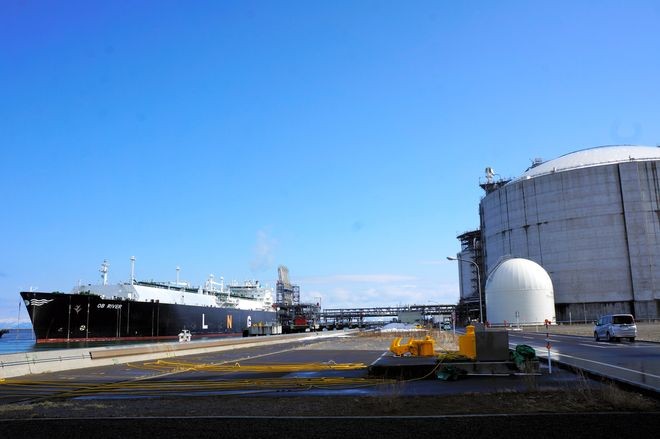As trade negotiations between Japan and the United States intensify, the possibility of increasing Japanese imports of liquefied natural gas (LNG) from Alaska has become a major talking point.
While the Alaskan LNG project holds logistical and geopolitical advantages for Japan, serious questions remain about its economic feasibility.
Washington has been eager to promote the project, which involves transporting natural gas from fields in Alaska’s North Slope to a liquefaction terminal on the southern coast, with plans to export 20 million tons annually to Asia starting in the 2030s.
Following a summit with Prime Minister Shigeru Ishiba in February, President Donald Trump said the two countries were discussing a joint gas development project in Alaska.
The initiative aligns with U.S. ambitions to reduce its trade deficit through greater energy exports.
Just days after announcing a sweeping tariff policy in April, Treasury Secretary Scott Bessent told U.S. media that Japan, South Korea and Taiwan were expected to become key buyers of and investors in Alaskan LNG, possibly offsetting the need for tariffs.
Seeking to ease tariff pressures from Trump, Japan has used LNG imports as a bargaining chip in ongoing bilateral negotiations. A senior official from the Japanese delegation said, “If the project makes economic sense, we are open to importing it.”
Taiwan signed a preliminary agreement with the Alaska Gasline Development Corp. in March, and South Korea has also shown interest.
MASSIVE PIPELINE COSTS
However, doubts about the project persist among Japanese businesses.
The project’s massive scale is a sticking point. A 1,300-kilometer pipeline is required to connect northern gas fields to the southern coast, with total costs estimated at $44 billion (6 trillion yen).
Takashi Uchida, chairman of the Japan Gas Association and chairman of Tokyo Gas Co., noted that the typical cost of LNG development is less than half that amount.
The project dates back decades but has repeatedly stalled due to its enormous cost.
Daisuke Yamada, executive vice president of Tokyo-based oil and gas development company Inpex Corp., remarked, “It would be extremely difficult for private companies to make this commercially viable.”
Alaska holds historical significance for Japan’s energy sector; it was the source of the country’s first LNG imports in 1969.
Tokyo Gas announced in 2017 that it was considering purchases from the Alaskan gas project, but progress has since slowed.
At a news conference earlier this year, Taku Minami, the company’s managing executive officer, said no more than, “We are keeping an eye on it as a potential supply source.”
Mitsubishi Corp., which facilitated Japan’s first LNG imports from Alaska, is also prioritizing other ventures.
Mitsubishi President Katsuya Nakanishi said the company is focusing on completing its LNG Canada project before committing to new ones.
LOGISTIC, GEOPOLITICAL APPEAL
Despite the financial concerns, Alaska still offers strategic advantages.
LNG can be shipped from the U.S. state to Japan in just a week—faster than from the Middle East or the Gulf of Mexico—lowering transportation costs.
Diversifying Japan’s supply sources also reduces geopolitical risk. Currently, Australia supplies 38 percent of Japan’s LNG imports, followed by Malaysia at 15 percent and the United States at 10 percent. Boosting U.S. imports could enhance energy security.
Many other LNG projects across the United States, particularly those along the Gulf of Mexico, are nearing final investment decisions, according to the state-backed Japan Organization for Metals and Energy Security.
Masataka Yarita, an LNG and methane specialist at the organization, said Alaska’s success depends on its ability to offer competitive pricing compared to these alternatives.
(This article was written by Satoshi Shinden, Tomoki Morishita and Shiki Iwasawa.)


AloJapan.com